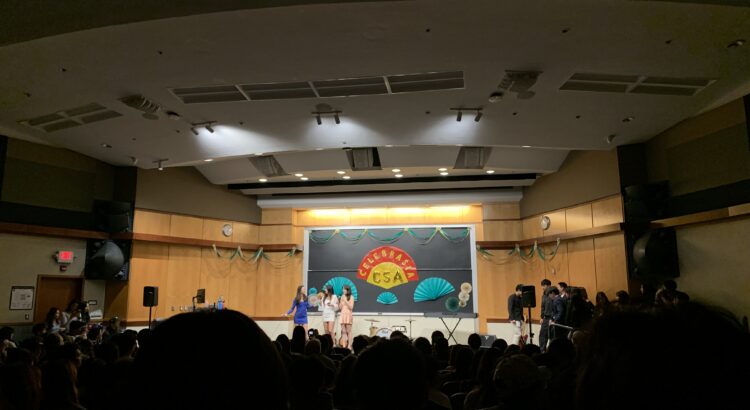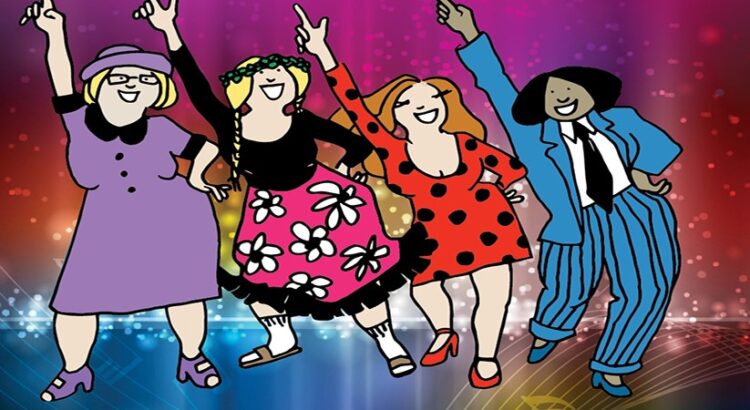“Father Who Art in Heaven” was Jason Cianciulli’s culminating senior MFA thesis. As both a student at the University and a grad student professor, I’ve watched Jason grow and worked with them over the past two years. They work with many physical theater practices as well as floor work and partnering–needless to say; their movement is extremely experimental and paves the way for the upcoming generation of dancers. I find his work especially interesting because of the merging of styles and genres, highlighting theater work, dance, music, and the visual arts.
What distinguishes Jason’s work from other dance works, is its innovation and commitment to fusing styles and genres. With a dark and mysterious undertone, the piece began with dancer Ruby Clay, sitting at a table alone, moving extremely slowly. An otherworldly lighting bathed her body from a strategically placed television and showcased the depth of the space. The curtains were set up in a way I had never seen before; it looked like the stage was cut into a “U” shape. Although showcased only at the beginning and the end, her character stayed on stage the entire time, sitting emotionless. As subtle as it was, her addition became one of my favorite parts of the piece.

Two senior acting majors, Jack Weaver and Molly Felsher, had a couple-like relationship on stage with a sort of disdain toward one another. Their relationship added complexity to the narrative and paved the way for the overall tone. Although their acting was extremely interesting to the work, the moving of the curtains and the changing of the lighting really captivated me. Smaller curtains were seamlessly pulled on and off stage to take away, change, or add characters on the stage that set entirely new environments in the same stage space. Rather than blacking out the space, the curtains served as a continuation of the dance but altered it simultaneously. I have never seen this before in a dance performance! Jason created new shapes on the stage instead of the “normal” stage set-up that utilized the theater’s physical capabilities, unlike previous dance works I’ve seen at the University. Needless to say, I am inspired!

There were two figures with large black cloaks with a ring at the bottom and large old people masks. Because of the circular bottom, it appeared as if the figures were floating, which, again, was an interesting way to play with fabric and movement in space, that I have yet to see at the University. The two figures kiss at one point, which seemed quite absurd in the moment but in the best polarizing way possible. They remove their masks and dance with the other cast members toward the end. There was an incredible stage fighting scene with red lighting covering half the space and a strobe light section from the television with dancers moving throughout it, looking like they were traveling through space and time in real-life stop-motion animation. Again, it is extremely inspiring and innovative.
Jason presented themself as a really intriguing figure with long fingers and an extremely pale appearance. At one point, they hid in a small box under the television (which I didn’t see happen) and crawled out like it was magic!! Clearly, playing with the audience’s focus/attention and keeping the audience on their toes. Jason uses the word “decay” when describing this piece, which is the perfect illustration of the work. I watched people decay over time, in relation to one another and alone. It was a beautiful performance art, and I hope Jason continues to show this work–as I don’t feel it is the end of it! Or I hope not, at least…














